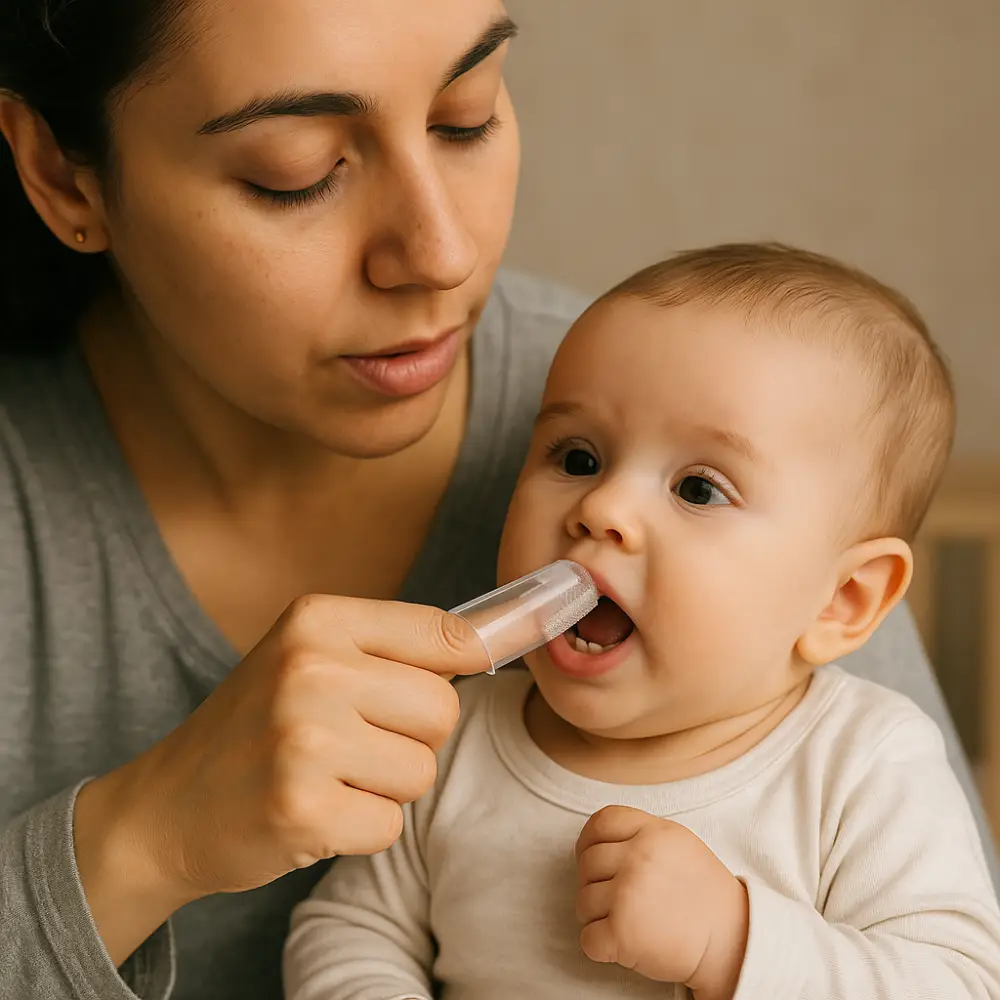As a parent, witnessing your baby’s first milestones is a joyful and cherished experience. One of the most exciting yet challenging stages is when your baby’s first teeth begin to appear. This milestone marks the beginning of a new chapter in both your baby’s development and your parenting journey. To help you navigate this stage with ease, we’ve put together a comprehensive guide on caring for your baby’s first teeth, complete with effective rituals and practical advice.
Understanding the Teething Timeline
Usually, a baby’s first teeth emerge between 4 and 7 months of age, although the timing can vary. The bottom two front teeth (lower central incisors) typically appear first, followed by the top two front teeth (upper central incisors). By age three, most children will have a complete set of 20 primary teeth.
Signs Your Baby is Teething
Before the first tooth surfaces, you might notice signs of teething, including:
- Increased drooling
- Chewing on objects
- Irritability or fussiness
- Swollen gums
- Changes in sleeping or eating patterns
Rituals and Care Tips for Your Baby’s First Teeth
1. Establish a Routine
Begin oral care even before the first tooth appears. Gently wipe your baby’s gums with a clean, damp cloth or a soft infant toothbrush. This not only keeps their mouth clean but also introduces the habit of oral hygiene.
2. Soothe Teething Discomfort
Teething can be uncomfortable for babies. To ease their discomfort:
- Offer a chilled, not frozen, teething ring or a wet washcloth to chew on.
- Gently massage your baby’s gums with a clean finger.
- Use over-the-counter remedies like teething gels, but consult your pediatrician first.
Try the amazing AI feature: Get Your Future Baby Photos Now.
3. Prioritize a Balanced Diet
As your baby begins to intake solid foods, ensure they’re receiving a balanced diet rich in calcium and vitamins. Dairy products, leafy greens, and fortified cereals support healthy tooth development.
4. Introduce a Toothbrush
Once the first tooth erupts, switch to a soft-bristled infant toothbrush. Use a smear of fluoride toothpaste, about the size of a grain of rice. Brush gently twice a day.
5. Make Dental Visits a Habit
Schedule your baby’s first dental visit by their first birthday or within six months of the first tooth’s appearance. Early dental visits are crucial for preventing potential issues and getting personalized advice on oral care.
6. Create Positive Associations
Make brushing a fun ritual. Sing a song, use a timer, or let your baby hold a toothbrush while you brush. It’s all about creating a positive and enjoyable experience.
Common Concerns and Solutions
Refusing to Brush
If your baby resists brushing, try different strategies like using flavored toothpaste, playing their favorite song, or brushing alongside them to model the behavior.
Handling Tooth Decay
Even though baby teeth are temporary, they can succumb to decay. Avoid putting your baby to bed with a bottle and limit sugary snacks. Establishing these habits early can prevent cavities.
Transition to a Cup
Around the first birthday, begin the transition from bottle to cup to reduce the risk of tooth decay. An open cup or a straw cup is preferable to sippy cups which can still encourage prolonged exposure to sugars.
Conclusion
Caring for your baby’s first teeth is a rewarding process that sets the stage for lifelong oral health. By establishing gentle routines, soothing teething discomfort, and incorporating fun rituals, you can ensure that your baby’s first dental experiences are positive. Remember, each child is unique; stay attentive to their needs and consult with healthcare professionals to tailor the best care plan for your little one. Celebrating these small milestones with love and attention will lay the foundation for a bright, healthy smile.





